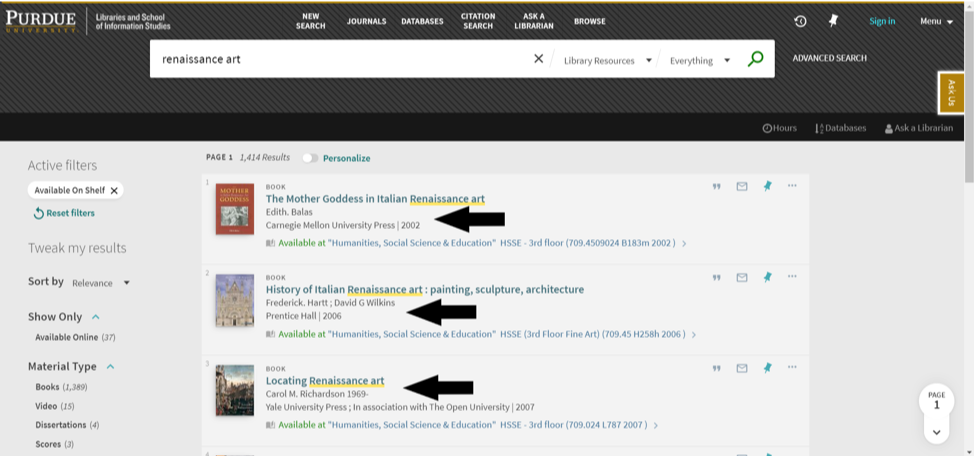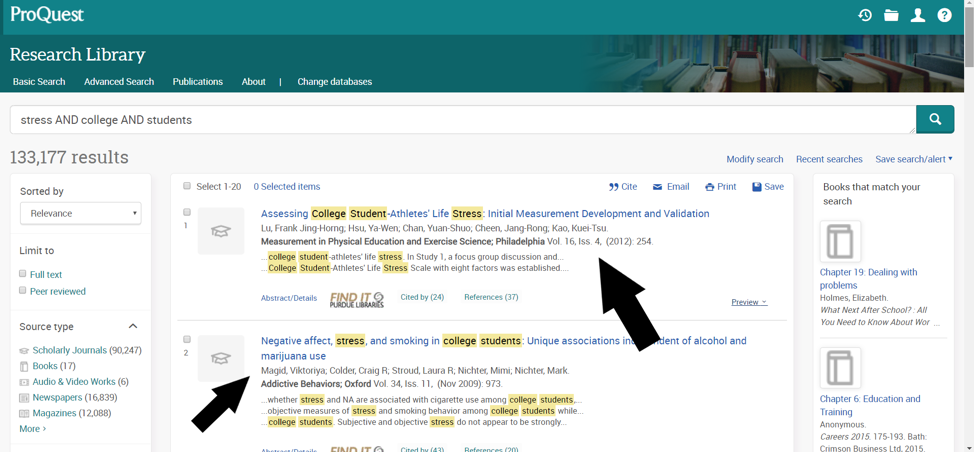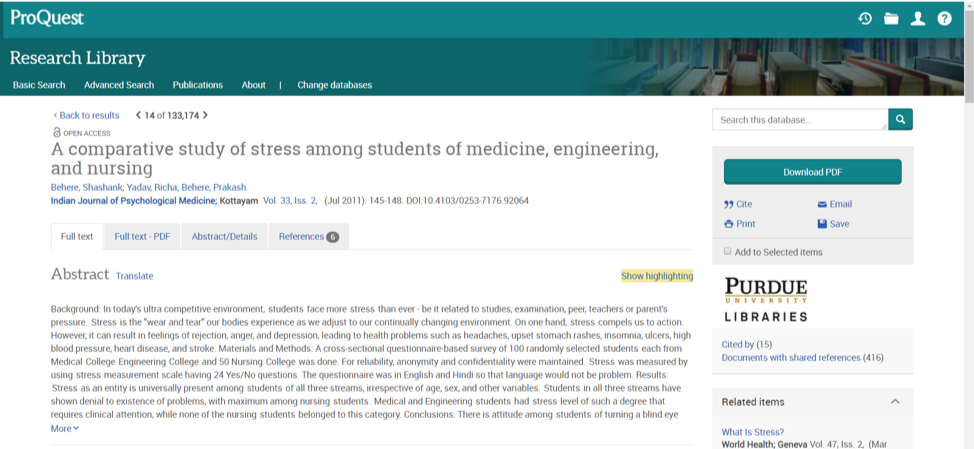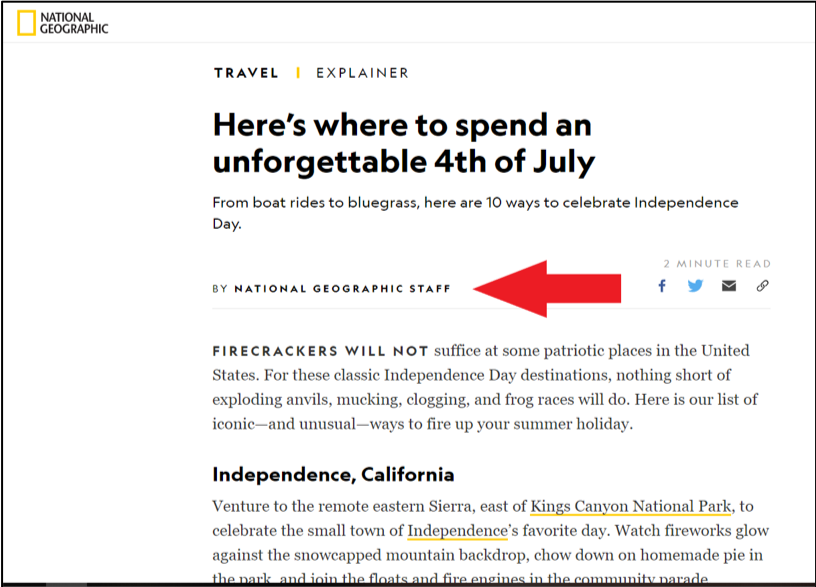Evaluating Bibliographic Citations

Welcome to the Purdue OWL
This page is brought to you by the OWL at Purdue University. When printing this page, you must include the entire legal notice.
Copyright ©1995-2018 by The Writing Lab & The OWL at Purdue and Purdue University. All rights reserved. This material may not be published, reproduced, broadcast, rewritten, or redistributed without permission. Use of this site constitutes acceptance of our terms and conditions of fair use.
A bibliographic citation provides relevant information about the author and publication as well as a short summary of the text, usually known as the abstract. Depending on where you find your information, the bibliographic citation will vary.
Before you spend a lot of time reading a source, begin by looking at the following information in the citation to evaluate whether it's worth pursuing.
Consider the author, the title of the work, the summary, where it is (e.g., a book, an academic journal, a blog, a social media site), and the timeliness of the entry. You may also want to look at the keywords to see what other categories the work falls into. Evaluate this information to see if it is relevant and valid for your research.
Library Catalog
When searching for sources in a library catalog, the bibliographic citation will often include the author, the publisher, and the physical location of the source in the library (see image below). Using a library catalog is helpful if you are looking for print sources for your research.

Example of bibliographic citations in a library catalog.
Once you find the bibliographic citation, take a look at the author and the publisher. Has this author published other works? Does the publisher list other publications on their website? If you are still uncertain about the credibility, locate the physical source and read bits of it to see if it contains information that’s relevant to your research.
Online Databases
When searching for information in online databases such as EbscoHost or ProQuest, you will most likely find a bibliographic citation entry beneath the title of the source.

Examples of bibliographic citations in an online database.
If a summary or abstract is not available in the preview, often you can click on the source and view more details (see image below).

Sample extended bibliographic citation and abstract.
Websites
Different websites contain different levels of bibliographic citations. Sometimes it’s possible to find complete author information, while other times you may simply have a username or an author’s initials.
Most websites list the available author information directly under the title of the article or at the bottom of the article.

Sample extended bibliographic citation and abstract.
Sometimes a website does not list an author. If this is the case, it’s important to determine whether the website itself seems credible. If the website is associated with a print publication, or is from a well-known organization, it is probably credible. However, you should read the article to determine whether the information seems valid. On the next page you will find more strategies for determining whether a source is credible.

Sample extended bibliographic citation and abstract.
Understanding the differences in bibliographic citations is an important step as you search for sources to include in your research.